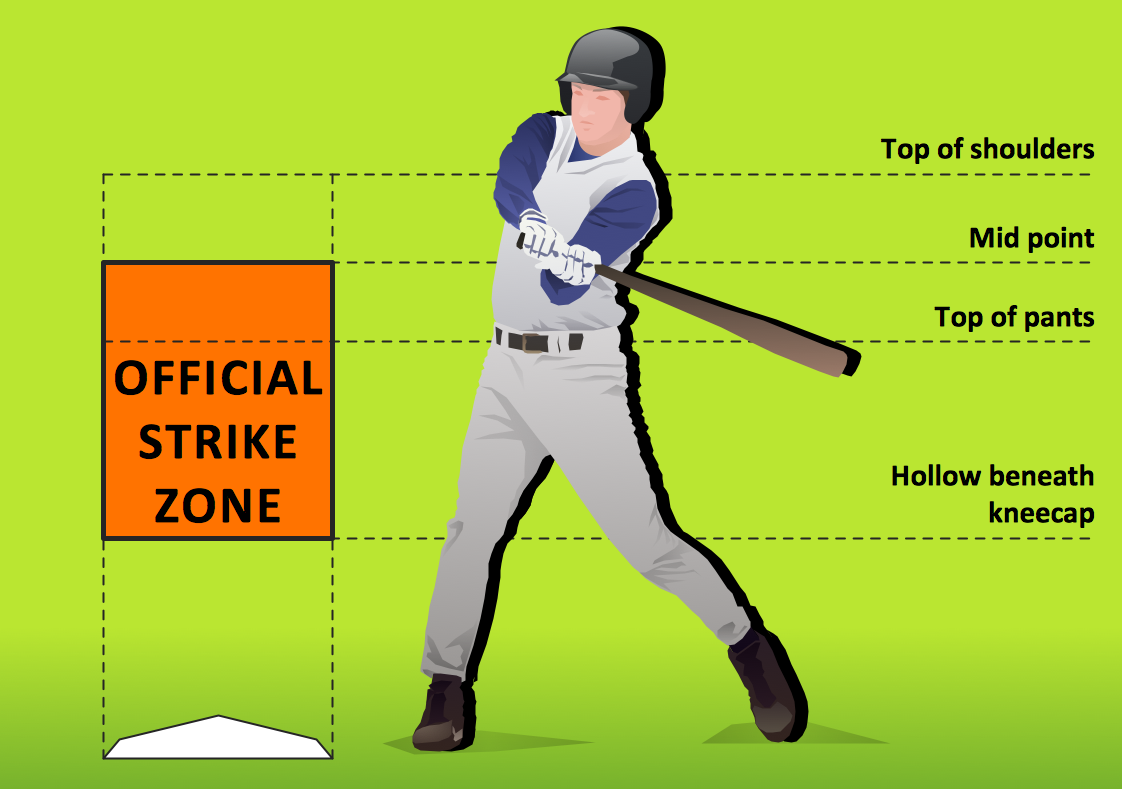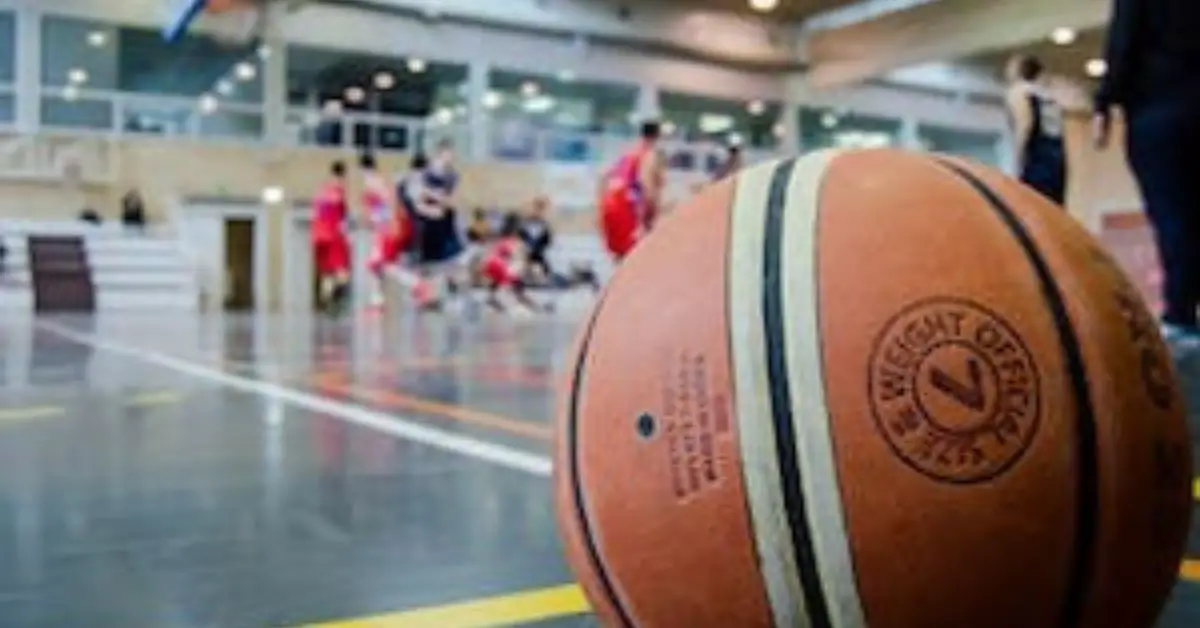Baseball vs. Softball: Key Differences and Comparisons
Baseball and softball are bat-and-ball team sports that share many similarities, yet feature key differences. Both involve hitting a ball, running bases, and scoring runs, but vary in ball size, field dimensions, and pitching style.
Baseball and softball share a common ancestry and capture the hearts of players and fans around the world with their compelling mix of strategy and physical skill. Originating from the same roots, baseball traditionally caters to male athletes, while softball has become more associated with female players, although both sports offer competition for all genders.
The distinct pitching techniques — overhand in baseball versus underhand in softball — along with differences in equipment and playing fields, distinguish the two. While a baseball is smaller and denser, a softball is larger and less dense, potentially affecting hitting dynamics and game speed. Players and enthusiasts keen on understanding the nuances between these two beloved sports must consider these factors. This introduction aims to provide a clear, engaging comparison and understanding of the distinctive aspects that define baseball and softball.

Credit: www.conceptdraw.com
Origins And History
Let’s take a swing back in time to unearth the origins and development of baseball and softball. These two sports share common roots yet have evolved uniquely. Exploring their inception reveals a rich tapestry of history that has shaped each game into what fans enjoy today.
Roots Of Baseball
Baseball’s earliest form dates back to 18th-century England. Yet, it found its popular ground in America. It began as a game called “rounders” played by school children. The New York Knickerbocker Base Ball Club, formed in 1845, played a key role. They developed the first set of modern rules.
Civil War soldiers further spread baseball’s popularity. It united people across states. Soon, the National League formed in 1876, marking the birth of professional baseball.
| Year | Event |
|---|---|
| 1845 | First rules by Knickerbocker Club |
| 1876 | National League foundation |
Softball’s Inception
Softball started indoors, in 1887, as a winter version of baseball. It was first played with a broomstick and boxing glove. Chicago, often cold, needed an indoor sport. This game was called “indoor baseball”, “kitten ball”, and later, “softball”.
The sport spread rapidly and gained structure. By 1934, the Joint Rules Committee on Softball standardized rules. This made softball a sport in its own right.
- 1887: Softball’s first game in Chicago
- 1920s: Name “softball” adopted
- 1934: Standardization of rules
Field Dimensions And Layout
Understanding the field dimensions and layout is crucial when comparing baseball and softball. These differences affect how each game is played. In this section, we explore the specifics starting from baseline lengths to the field specifics in softball. Discover what sets these two fields apart and how it influences the game’s dynamics.
Baseline Lengths In Baseball
Baseball fields are known for their iconic diamond shape. The distance from base to base, or the baseline length, is a key factor. It affects player speed and strategy.
- Infield baseline: 90 feet
- Home to second base: 127 feet and 3 3/8 inches
These longer baselines lead to more time spent running bases. This demands higher endurance and speed from players.
Softball Field Specifics
Softball fields differ significantly from baseball fields. The infield is compact, and the game is faster paced due to shorter distances.
| Element | Measurement |
|---|---|
| Infield baseline | 60 feet |
| Home to second base | Approximately 84 feet |
The closer bases in softball mean quick reactions are essential. It transforms the game into a faster, snappier experience.
The field layout is not just about the size but also the game’s pace and player interaction. Whether you swing a bat in baseball or softball, the field you play on shapes how you play.
Equipment Variations
Baseball and softball share many similarities, but their equipment tells a different story. Distinct differences in gear not only affect the gameplay but also the strategy behind these two beloved sports. Let’s dive into the specifics of each one’s equipment and how they set the sports apart.
Baseball’s Bats and BallsBaseball’s Bats And Balls
Baseball equipment is tailored for speed and precision. Here are key aspects:
- Bats: Usually made of wood or metal, with a slim profile for swift swings.
- Balls: Hard and small, designed for fast pitches and long-distance hits.
Baseball bats must meet specific regulations in professional leagues. They typically have a maximum diameter of 2.61 inches and a length up to 42 inches.
| Item | Material | Size |
|---|---|---|
| Baseball Bat | Wood/Metal | Up to 42 inches |
| Baseball Ball | Leather/Cork | 9 inches in circumference |
Softball Gear Differences
Softball gear puts an emphasis on control and strategic play. Check out these elements:
- Gloves: Larger with a deeper pocket to catch the bigger ball.
- Bats: Shorter and lighter than baseball bats, they allow for a quicker reaction time.
- Balls: Softer and larger, they lead to a different pitching and hitting approach.
Softball bats often have a maximum diameter of 2.25 inches and a length limit of 34 inches, accommodating the sport’s unique style of play.
| Item | Use | Advantage |
|---|---|---|
| Softball Glove | Catching larger ball | Deeper pocket |
| Softball Bat | Quicker swing | Shorter and lighter design |
| Softball Ball | Easier catching and hitting | Soft and large |

Credit: www.justballgloves.com
Gameplay And Rules
Baseball and softball share a common ancestry and spirit. Both games captivate millions with their unique combination of strategy, skill, and excitement. We’ll look at how these cousin sports compare on the field, focusing particularly on gameplay and rules.
Pitching Styles: Baseball Vs Softball
Pitching stands as a major difference between baseball and softball. In baseball, pitchers throw overhand from a raised mound. Softball pitchers use an underhand motion from a flat pitching circle. This results in distinct game dynamics.
- Baseball: 60 feet 6 inches pitching distance; Overhand throws; High-speed pitches
- Softball: 43 feet pitching distance (women’s); Underhand windmill style; Mix of speed and movement
Innings And Game Duration
Time on the diamond differs too. Baseball typically goes for nine innings. Softball games are often shorter, lasting seven innings. This can affect both strategy and stamina. Moreover, softball enforces a rule that if a team leads by a certain number of runs after five innings, the game ends early.
| Sport | Innings | Early End Rule (Run-Rule) |
|---|---|---|
| Baseball | 9 innings | No official rule |
| Softball | 7 innings | Yes, varies by league |
Each of these elements greatly influences the pace and style of the game, breathing life into these beloved pastimes.
Level Of Play And Gender Trends
Exploring the Level of Play and Gender Trends in baseball and softball highlights a fascinating dynamic within these two diamond sports. The professional realm paints a contrasting picture when comparing baseball and softball, while trends in collegiate and amateur participation reflect shifts in gender involvement over time. As we delve into the nuances, it’s clear that each sport offers unique opportunities and challenges for athletes. This closer look will illuminate the current landscape of professional leagues and how both genders engage with these sports at various levels of play.
Professional Leagues
On the professional stage, baseball is widely recognized with major leagues like the MLB (Major League Baseball) drawing global audiences. This high level of play showcases top male athletes, presenting a career opportunity for aspiring baseball players. In contrast, softball’s professional visibility is less but growing. Women’s leagues, such as the NPF (National Pro Fastpitch), spotlight elite female athletes, offering a smaller yet significant platform for professional play.
Baseball Professional Leagues:
- MLB: Men’s major league with international viewership.
- Nippon Professional Baseball: Japan’s leading men’s baseball league.
Softball Professional Leagues:
- NPF: Premier women’s professional league in the US.
- Japan Women’s Softball League: Highly competitive women’s league.
Collegiate And Amateur Participation
In collegiate and amateur levels, trends show a more diverse landscape. Softball often attracts female athletes, with college softball World Series earning substantial viewership. Baseball remains popular among male athletes at these levels, yet women’s participation is on the rise in amateur baseball leagues.
Collegiate Baseball vs. Softball Participation:
| Sport | Male Athletes | Female Athletes |
|---|---|---|
| Baseball (NCAA) | High | Emerging |
| Softball (NCAA) | Low | High |
Amateur Baseball and Softball: The presence of both genders thrives. Youth leagues introduce boys and girls to either sport. Female baseball leagues gain traction, reshaping gender norms. Guided by organizations like USA Baseball and USA Softball, opportunities for all athletes continuously expand.
Cultural Impact
Baseball and softball are not just games. They are powerful sports that shape cultures around the world. They teach lessons beyond the field. Let’s explore how these sports impact society and push for gender equity.
Baseball’s Influence On Society
Baseball, known as America’s pastime, has deep roots in society. Legends like Babe Ruth and Jackie Robinson became household names. The sport has been a backdrop for historic social change, including racial integration. Youth programs and local fields have become community cornerstones, fostering teamwork and discipline among players of all ages.
| Aspect | Influence |
|---|---|
| Cinema | Films like “Field of Dreams” show baseball’s impact on family and hope. |
| Literature | Stories and poems often use baseball as a metaphor for life’s challenges. |
| Integration | The sport played a pivotal role in breaking racial barriers in America. |
Softball’s Role In Gender Equity
Softball has become a symbol of female empowerment. Emerging as a women’s alternative to baseball, it has paved the way for female athletes in all sports. Title IX, a landmark U.S. law, created more opportunities for women’s sports, including softball. The sport champions equality and inspires girls to strive for excellence on and off the field.
- Title IX: It pushed colleges to give equal sports opportunities to women.
- Olympics: Softball’s inclusion since 1996 has opened doors for women globally.
- Professional Growth: Women’s professional softball leagues showcase top talent.
Physical Demands And Training
Physical Demands and Training are core elements in both baseball and softball. These sports challenge athletes in unique ways. Strength, agility, and endurance are essential. Players must train rigorously to excel. Simulation of game scenarios is vital. It shapes both bodies and technique. In this section, we explore how conditioning and skills training propel athletes to peak performance. We will look at customized routines and drills specific to baseball and softball.
Athletes’ Conditioning
Conditioning for baseball and softball athletes is demanding. It develops power, speed, and stability. Core exercises are the linchpin of an athlete’s routine. They ensure robust torso strength. Leg and arm strength are equally important. Agility drills enhance quick movements. These drills prepare players for swift changes in direction. Stamina building is crucial. It allows athletes to maintain peak performance throughout a game.
- Core strengthening exercises for rotational power.
- Weight training tailored to enhance hitting and pitching.
- Sprints and agility ladders to improve base running and fielding.
Skills Training And Development
Developing skills in baseball and softball is continuous. Skills training demands repetition and focus. Practice refines batting, pitching, fielding, and base running. Coaches use drills to improve technique. Players work on hand-eye coordination for batting. Fielding drills boost reaction time and precision. Regular pitching sessions hone speed and control. Catchers train on specific drills. These drills improve their ability to manage the game from behind the plate. In essence, skills training molds instinctive and intelligent gameplay.
| Skills Area | Baseball | Softball |
|---|---|---|
| Batting | Drills with varied pitch speeds | Practice on quick swing response |
| Pitching | Technique for multiple pitches | Work on windmill pitching speed |
| Fielding | Ground and fly ball drills | Short game fielding scenarios |
| Base Running | Lead-off and steal strategies | Explosive start and slide techniques |

Credit: www.walmart.com
Economic Aspects
Talking dollars and cents, baseball and softball share more than just a field shape. They both ride on economic engines, powered by ticket sales, professional salaries, and brand deals. Yet, their economic worlds differ in striking ways. Let’s dive into how these two sports stack up when it comes to the money game.
Professional Salary Comparison
Baseball stars often hit financial home runs with their paychecks. The Major League Baseball (MLB) offers some of the heftiest salaries in professional sports. In comparison, softball professionals typically see smaller figures in their bank accounts.
| Baseball (MLB) | Softball (NPF) |
|---|---|
| Average Salary: $4 million | Average Salary: $6,000 |
Marketability And Endorsements
In marketability, baseball players often walk off with bigger endorsement deals.
Softball players, while talented, find a smaller pool of endorsement opportunities.
Big brands associate more with baseball, potentially due to its broader television audience.
Both sports have stars that shine in ads, but baseball leads with bigger campaigns.
International Recognition And Competitions
Both baseball and softball have marked their space on the global stage. They gather athletes from around the world, showcasing striking differences yet profound kinship in international play. Excitement fills the air as teams compete for titles, prestige, and the honor of their countries.
World Series And International Tournaments
The World Series in baseball is a spectacle of talent. It concludes Major League Baseball in the United States; champions are crowned victors of the diamond. In contrast, softball’s peak international competition often takes shape in the form of World Championships. These championships highlight the best from myriad nations.
- World Baseball Classic: This global baseball event features top players from multiple countries.
- Women’s Softball World Championship: It is the pinnacle for softball teams worldwide, occurring every few years.
Olympic Presence And Controversy
Baseball and softball once basked in Olympic glory. Their presence in the Olympic Games cemented their status as global sports. Yet, controversies arose. The International Olympic Committee removed both sports in 2005, with debates on their merit as Olympic disciplines.
| Olympic Years | Baseball | Softball |
|---|---|---|
| 1992-2008 | Official Olympic Sport | Official Olympic Sport |
| 2012-2016 | Not Included | Not Included |
| 2020 | Reintroduced | Reintroduced |
Enthusiasts celebrated their return in 2020. The future for these sports in the Olympics remains a hot topic. Fans and athletes alike cherish Olympic moments, while administrators evaluate their global resonance.
Future Directions And Innovations
Baseball and softball hold tight to their roots while looking forward. New ideas and tools shape the future of these much-loved games. Let’s explore where these sports might go next!
Evolving Technology In Sports
Baseball and softball are experiencing a revolution as technology grows. Here are some ways this change is happening:
- Enhanced Equipment: Bats and gloves are getting smarter. Sensors now track player swings and throws.
- Virtual Training: Virtual reality aids players in honing their skills. They face virtual pitchers and improve their game strategy.
- Data Analysis: Teams use data to make better decisions. They analyze player performance in new ways.
Growth Of The Sports Globally
Baseball and softball cross oceans and bring new fans together. The world sees a new love for these sports. Here’s how they grow:
- International Competitions: World tournaments bring nations together. They spark global excitement.
- Grassroots Programs: Countries start programs for youth. They teach skills and build passion early on.
- Gender Equity: Softball leads in female sports. It gives girls and women worldwide a chance to shine.
Frequently Asked Questions On Comparing Baseball And Softball
What Are The Differences Between Softball And Baseball?
Softball features a larger ball and smaller field compared to baseball. Pitching in softball is underhand, whereas baseball uses overhand throws. Softball games typically span seven innings, shorter than baseball’s nine. Also, softball bases are closer together, affecting base-running strategies.
What Are 5 Similarities Between Softball And Baseball?
Softball and baseball both involve hitting a ball with a bat, running bases, and fielding. Each sport has nine players on the field, uses three strikes for an out, and prioritizes scoring runs. The pitching style differs but both aim to retire batters.
What Is Harder Softball Or Baseball?
Determining whether softball or baseball is harder depends on the player’s skills and experience, as each sport has its unique challenges. Personal preference and individual strengths play key roles in this comparison.
Conclusion
Baseball and softball share a common bond, yet their nuances offer unique appeals. Each sport has its distinct charm and challenges, inviting players of all ages to the field. Whether you swing for the fences or slide into home, the heart of the game beats strong.
Embrace their diversity, and enjoy the thrills both pastimes provide.



